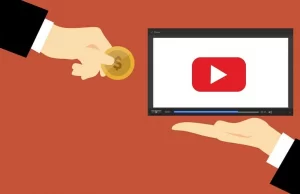Video marketing is a very powerful medium if used correctly. It has the ability to reach people emotionally, which can create great affinity for your product or brand. However, marketing a business through video and being successful at it requires some careful planning. In this post we’ll dive deep into video marketing so you can use it to grow your business.
Video marketing is a hot topic right now, and anyone can learn how to create marketing videos using a smartphone or webcam. However, while you may be good at making videos, do you know what it takes to create effective video content?
Having a quality video isn’t enough to succeed in online video marketing—you need to make sure your videos are useful, fun to watch, and well-received by viewers.
Video marketing helps to create brand awareness and generate leads by connecting with your customers. If you want to increase your sales, promote your brand and get more leads, then this is for you.
Because video marketing will help you in many ways. First of all, it will help you to get more leads. Some of the recent surveys have showed that 80% of marketers use video as part of their content marketing strategy to promote their brands and to get more leads.
Here are steps you can take to start creating an effective video Marketing Strategy.

1. Create Your Video Around the Story, Not The Sale
One of the most effective ways to grab attention and keep people engaged is to tell a story in your video that relates to the brand or product you’re promoting.
A good story creates a connection between the viewer and your company, which can build trust and motivate people to want to learn more about what you do.
The video should be centered around the story, not the sale. In other words, it’s not about your company, it’s about the audience. Your goal is to relate to them and provide a solution to their problems.
When you write a script that focuses solely on product benefits, you miss an important opportunity: to connect with the viewer at an emotional level. People don’t buy products or services based on logic alone.
For example, if you are selling a financial management app, it can be easy to focus on features like spreadsheets and graphs. But rather than focusing on these features, consider what your customers will be able to do because of them — move up in their career, take control of their finances, etc.
It’s easy to fall into the trap of thinking that the purpose of your video is to sell something. This approach is often fruitless because viewers aren’t as interested in hearing about your product as they are in learning more about how it can help them.
To get people excited about your product, you need to tell a story that connects with your target audience and highlights the ways it can improve their lives.
Here are a few tips for doing so:
1. The video should be centered around the story, not the sale.
Too many businesses focus on how their product or service can make money for them, rather than helping people solve problems. Your video should be about your customers — not your company.
2. Focus on the audience and their problems, not your product or service.
Businesses often talk too much about features instead of benefits, which is what consumers and clients really care about. While you may have a great feature set, it’s important to highlight what they mean to the audience in terms of the benefits they provide.

3. Tell a story.
Showcase real-life examples of customers using your product or service and how it helps them solve their problems or achieve their goals. This can take many different forms — testimonials, case studies, success stories and more — but regardless of what you use, paint an emotional picture of how your product helps people succeed/live/work better so that prospective customers are inspired to do the same.
4. Keep it concise.
Shorter videos perform better than long ones. Keep it short, simple and relevant. The best content is delivered in a way that’s easy to understand, low commitment and focuses on why the audience should care about what you’re saying. If your video doesn’t deliver value right away, viewers will move on to something else.
A one-minute video is ideal if you want to keep viewers engaged, but don’t feel like you have to cram all of your information into that short time frame. You can create a series of explainer videos to cover different aspects of your business or product, or focus on a single topic in each video. For example, your product might have unique features that are worth calling out in separate videos, instead of including everything in one long video.
5. Use captions and high quality audio.
It’s hard to watch a video that has poor audio or no captions for viewers who are in a public place or watching videos at work. If your video doesn’t have captions, consider adding them using YouTube’s automated captioning service (the accuracy isn’t 100%, but it’s better than nothing).
6. Ensure you have a clear call-to-action (CTA).
Remember that your goal is to get viewers to take action after watching your video, whether it’s buying your product or sharing it with friends. Make the CTA clear and concise so that users know exactly what they need to do next.
So, how do you make a CTA super clear? The first thing you want to do is make sure that the CTA is relevant to the video content. If you’re encouraging people to share your video, then it should be entertaining content that makes them want to share it with their friends. If your goal is for people to buy something, then the CTA should be targeted at those who are likely interested in or have expressed interest in purchasing something similar. The trick is not just getting people’s attention but directing them towards an action that will move them closer towards making a purchase.

2. Use video for all aspects of your marketing campaign.
There are many reasons why a marketer would use video for all aspects of their marketing campaign.
In fact, according to recent statistics, 80% of businesses now use video as a marketing tool.
Video is different from other types of media because it engages more senses than either audio or text and has a longer shelf life than live events. That’s why it’s so important to understand how you can use video in all aspects of your marketing campaign.
Here are some ways you can use video in all aspects of your marketing campaign:
1.Create videos for all kinds of content: tutorials, explainers, how-to videos, interviews, etc.
Videos can be used for a variety of purposes, including (but not limited to):
Tutorials: One of my favorite types of videos to create are tutorials. Tutorials are great because they are generally “evergreen” content, meaning they will always be helpful to your audience regardless of when they watch it. Tutorials can also be turned into other types of content, such as blog posts and ebooks.
Explainers: Explainer videos are great for advertising the benefits and features of your product or service. You can take this one step further by creating an animated explainer video, which is a great way to help people visualize what you’re explaining.
How-to videos: These videos are similar to tutorials, but there tends to be less focus on the why behind a topic. How-to videos tend to focus on the how, as you might expect from the name. They are usually very specific and task-oriented.
Interviews: Interviewing someone is a great way to create compelling content – especially if you interview a compelling subject!
Video gives you the opportunity to show someone how to do something, instead of just telling them. It’s a more engaging way to explain a process and is easier to follow than text. When you shoot an interview on video, it feels more intimate than if you were doing it on radio or even through text chat. Video content offers a lot of options, and it’s truly one of the best ways to get your message across.
2.Use videos on your website, blog and social media accounts
The first thing you need to do with video marketing is to place it in every place where people will be able to see it. Your website should be the first place that you put video content. This will allow people who visit the site to get a better understanding of what you have to offer them. You can also use video on your blog and social media accounts, so that others can see it as well.
3. Post video testimonials from happy customers.
If you want people to buy from you, it’s best to get someone else to tell them why they should do it. Video testimonials are shorter than written ones and much more likely to convince potential customers of the quality of your products and services.
4.Make the most of YouTube
Posting a video on YouTube is a good way to promote your business online. It is one of the most popular search engines and it has more than a billion users. Also, it offers great opportunities for advertising and increasing sales.
5.Create interesting content
You should create interesting content that will draw the audience’s attention to your company and its activities. Don’t forget that people prefer to watch those videos that they find entertaining or useful.
6. Share your videos on social media
One of the best ways to promote your business online is to share your videos on social media platforms such as Facebook, Twitter, Instagram, Google+ and so on. By doing this, you will reach a wider audience with little effort at all.
7.Use videos in emails and newsletters to promote your business
If you have a product or service that’s visually appealing, then video is the ideal medium for showing off what you do best. Find a way to show off your product or service with an interesting storyline and beautiful visuals, and then share it with your customers via emails and newsletters.
There are many ways to use videos in your business, including how-to videos, product demonstrations, and even a testimonial from a satisfied client as previously said.
Video is becoming an increasingly popular way for businesses to showcase their products and services. It’s also a great way to bring your email marketing campaigns to life. In fact, people are more likely to retain information when it’s presented in video format rather than text – so if you have something important to say, why not say it in video?

Create videos that show off what you do best!
If you want to get people talking about your business and sharing your content on social media, creating short clips that demonstrate what you do best is a great place to start. If they’re interesting enough, people will share them with their friends – and that means more exposure for your business!

Try to be natural and authentic when creating your marketing videos
Your marketing videos are a chance to set yourself apart from the pack. However, if you’re forced to create them on a budget, it can be tough to produce something that looks amazing.
While there are plenty of low-cost cameras, microphones and editing software available, there’s one thing you can’t fake: being genuine. If your video feels stiff and awkward, it will be difficult for people to connect with the brand or message that you’re trying to convey.
When it comes to making videos for your business, always be yourself. Videos are not only a great way to showcase your products and services, but also an opportunity to share your brand personality with viewers.
A significant part of any brand is its voice. How you communicate online can make or break your company’s marketing efforts. Some marketers go above and beyond when it comes to developing creative video content, while others are hesitant to get started because they feel they don’t have the time. Whatever side you fall on, there’s one thing we can all agree on — video isn’t going anywhere!
Video content is incredibly effective at getting users to take action and remember your brand. And as HubSpot’s research shows, when an individual views a video about a product, their likelihood of making a purchase increases by almost 70%.
Be professional: While authenticity is important in all social media tactics ,it’s especially important in video marketing. Try not to use filters or editing effects that make it hard to understand what you’re saying in the video. Also try to keep any background noise to a minimum so that viewers can hear you clearly.
Be concise: Shorter videos tend to perform better because they are easier to watch and less time-consuming. The average attention span of an adult is eight seconds, which means that this should be the maximum length of your marketing video. If possible, aim for about two minutes or less for optimal results.
Create a script: It’s always a good idea to write a script before you create a video. This will help you communicate your message in a clear and concise manner, without forgetting any important information. You also might want to ask someone else to read over the script and offer feedback on how effective it is as well as whether anything needs to be changed.
Be relevant: While your goal is probably to grow your revenue with this tactic, it’s better to focus on educating or entertaining your audience with your videos, rather than constantly promoting yourself. If you consistently provide value, they’ll come back for more.
Add text: If your video doesn’t have sound, add text to make sure people understand what you’re trying to say. Forgetting the closed captioning on your marketing videos could result in your reach being limited.
Be consistent: To increase engagement, try posting videos on a regular basis with similar themes so that viewers know what kind of content they can expect from you and will be more likely to follow you on social media.
Be on brand: You should always be mindful about your brand’s values and mission when creating content for your audience. That way, you can ensure that your videos align with your company’s overall message. If you have a new product launch coming up and want to inform your customers about it, create a video that incorporates both messaging and imagery that represents the product itself.
Social media video marketing is like a conversation . Your viewers expect you to be honest, truthful and authentic. They need to feel like they’re listening to a friend they’ve known for years. They want to be entertained by your videos, but more importantly, they want to learn something new from your videos.
When it comes to creating social media videos , people are looking for authenticity. This means being genuine, unfiltered and not using filters or editing effects that mask what you’re saying.
In order for viewers to connect with your brand , they need to feel like they’re interacting with someone they know on a personal level, someone they can trust 100% (not just some person who’s trying to sell you something.)
Great video content can be created on any budget.
Video can be an effective marketing tool for companies of all sizes. The problem that many people face is not knowing where to start or what to do when it comes to video production.
Video has the potential to engage your audience and make a lasting impression. But quality video production can be costly, so many brands avoid it.
The good news is that it’s possible to create great video content on any budget — even on a shoestring one.
Below are some tips for producing video content that’s powerful and effective, regardless of how much you’re willing to spend:
1. Keep it short.
Video ads should be short and to the point — 15 seconds is often enough time to get your point across. When creating longer videos, try to keep them under two minutes or less.
2. Use common themes and visual cues to tell a story.
There are countless ways you can produce engaging video content without spending a lot of money on special effects and expensive equipment. Visual storytelling is an excellent way to do this: Use familiar visuals, like storytelling scenes and symbols, as well as music, to evoke emotions in your audience members. This can help you create videos that are memorable and meaningful while keeping costs low.
3. Use stock footage whenever possible.
Instead of hiring models and actors, stick with stock footage when possible; there are plenty of inexpensive options available online these days in addition to the free stock footage provided by platforms like Animoto.
4. Create an animated video.
The best way to take advantage of animation is by creating a short explainer video that gives your audience an overview of what you do, why it matters and how it works for them. For any brand, new and experienced alike, animation is an affordable option that can produce amazing results when done correctly. If you’re not comfortable creating one yourself, enlist the help of a designer who specializes in motion graphics and animation to bring your vision to life.
5. Use public domain music.
Licensed music can get expensive, so stick with public domain music whenever you can find something appropriate for your brand videos. For a little more money, royalty-free music is usually the best option available and will offer more flexibility than traditional licensed music since you’ll have fewer restrictions on use and distribution.
6.Invest in good equipment up front.
Think about what type of videos you want to create, whether it’s long-form content or short clips, and buy equipment that will allow you to shoot high quality videos within those parameters in house rather than outsourcing the work every time you need new content.
7.Choose your locations wisely.
When you’re filming video content, it’s best to choose an indoor location that is well-lit and has good acoustics (or none at all, for that matter). You can also film outside if you have access to good lighting equipment (this will save you from dealing with shadows), as well as a top-notch audio setup that can filter out ambient noise such as traffic, birds chirping or other loud sounds.
8. Avoid expensive locations.
Stick to shooting at your office or home whenever possible, rather than paying for a more expensive location. If you do need an outside location, see if you can borrow space from a vendor or client who’d be willing to help support your content marketing efforts by allowing you access to their space for free (and perhaps including their logo in the end credits).
Create a storyboard before filming. The best way to save time is to plan out each scene before you start filming, including shots you need and any necessary props or locations. Use this as a checklist while you shoot so that you don’t forget anything important.

Tailor your video Marketing content
for different platforms and channels.
Video marketing is not one-size-fits all. Different platforms require different types of videos and often times different lengths, messages and calls to action.
For example, a short 30-second video works great on Instagram and Twitter, where audiences are generally scrolling through their feeds quickly. However, Snapchat is all about the quick-and-dirty video that disappears after a few seconds.
It’s also Important to remember that platforms like Facebook and YouTube have both live and pre-recorded options, while Instagram stories are only live — and they disappear in 24 hours!
Your audience will also vary depending on the channel or platform you use to host your videos. For example, it’s important to consider whether your best customer is on Facebook or Snapchat if you’re using social media for video marketing purposes.
Video marketing can help you grow brand awareness and drive conversions, but it works best when you tailor your content to the specific audience on each platform.
The first step is to create a general video that can be used anywhere and then use that as the basis for shorter videos aimed at specific platforms and audiences.
For example, you might use a longer video on your website, while using snippets of that video in ads on Facebook or Instagram.
By creating several versions of each video, you can get more mileage out of your content while helping it resonate with customers on different platforms.
And finally, keep your message consistent across all channels, but tailor it to the individual platform or channel as much as possible!
Optimize Your Video for SEO
One of the many reasons people use video in their content marketing is because it’s a way to stand out and capture your audience’s attention.
The other reason?
Video can increase the time spent by visitors on your site. Thus, longer exposure builds trust and signals search engines that your site has good content.
Moovly gives us whopping statistics: You’re 76% times more likely show up first on Google if you have a video embedded on your website. Since Google now owns YouTube, there has been a significant increase in how much videos affect your search engine rank.
All you need to do is take advantage of this free video marketing opportunity!
First of all, you need to make sure your video is optimized for SEO. This means that it’s tagged up with the relevant keywords, title and description.
By adding keywords to your video, you can help search engines understand what your video is about, so that it shows up in the right search results. This is also important for accessibility reasons, as people who are visually impaired may not be able to see the content of your video, but they can read its description.
It’s also important to add a keyword-focused title and description when uploading your video. This will ensure that your video stands out when someone searches for a specific term in YouTube or Google.
Create videos that are optimized for SEO.
It’s also important to add a keyword-focused title and description when uploading your video. This will ensure that your video stands out when someone searches for a specific term in YouTube or Google.
Promote your videos on LinkedIn. Share them in relevant groups and on your personal feed to spread the word with people who are likely to be interested in your videos.
Publish videos regularly.
This will help you build an audience on YouTube and keep them coming back for more.
Create a Compelling Thumbnail Image
The thumbnail image you choose will be the first thing viewers see when scrolling through a list of video results, and it can have a large impact of the amount of clicks to and views your video receives. YouTube recommends using a 1280 x 720 px image to ensure that your thumbnail looks great on all screen sizes.
YouTube has incredible potential as a marketing tool. By following the steps above, you can use the platform to grow your brand, generate leads, and drive sales.
Now that you’ve attracted video viewers and website visitors, the next step is to convert these visitors into leads. With most inbound marketing content, this means collecting some sort of contact information via a form. Video can aid this process by visualizing a solution to the buyer’s problem, whether that’s before the form on a landing page or as the offer itself. Overall, the goal of this kind of video is to educate and excite.
Social Video Marketing is becoming a valuable asset for every business. These days, more and more people watch videos on the internet for marketing techniques and other useful stuff. There are several techniques which can help in promoting any business like embedding videos on your blogs, websites, twitter and facebook pages, etc. You should also understand that the reliability of your content then on YouTube or another video platform gets greater importance. Only then will video marketing be effective in delivering all the benefits to your business!
The benefits of online video marketing and the tips outlined above should help businesses everywhere create videos that are engaging, interesting, and effective. They can also serve as a good starting point when starting a video marketing campaign. I hope these insights prove useful to you!
